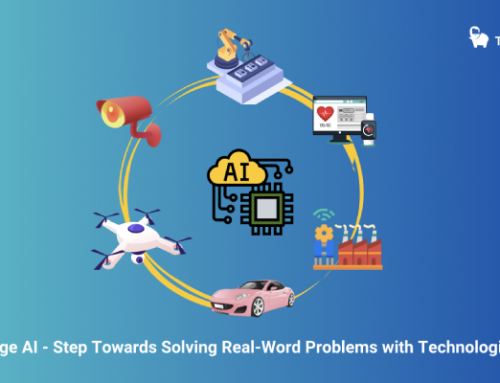Moving Artificial Intelligence From Pockets Of Brilliance To Mass Industrialization
We’ve moved past the pilot and experimental stage of artificial intelligence, and for it to succeed in the enterprise, it needs to be industrialized — capable of delivering results on a large scale.
That’s the word from Hilary Mason, general manager for machine learning at Cloudera, speaking at the recent AI Summit in New York. (Forbes was a media partner to the event.) The process of “industrializing AI is by taking the value we’ve proven in one place — or little pockets of brilliance — and making them broadly available.” The challenge, she continues, “is that we are aiming at a moving target, as the technology is changing rapidly. The practices, processes, and the way we structure our organizations need to change as well.”

AI, unleashedPHOTO: JOE MCKENDRICK
There are four key elements essential to industrializing AI, Mason says:
- Strategy: “What is your plan, how do you think about it?” Executives need to account for the fact that the economics of AI are unlike previous technologies. “With machine learning and AI, if you implement one thing, it modifies the cost function for everything else,” Mason says. “When you do one thing well, it makes others things do well, and cheaper. It’s not just a two-dimensional space.” At the same time, it’s difficult to predict the outcomes of AI projects. “Unlike other engineering disciplines, at the beginning of an AI project, you don’t know how you’re going to solve it, and what the quality of the end result will look like. This is science still.”
- Security governance and compliance: “You also need to be aware of security governance and compliance.. in a way that many organizations who have not adapted,” says Mason. At the same time, there are fears that the processes that organizations are attempting to put in place to manage and regulate AI will slow down innovation. “We’re still figuring this out. And in many organizations, what happens is. these systems become one of fear and slowing down innovation. We need to think through these issues and how they’re processed and do it in a way that supports faster innovation.”
- People: An essential piece of industrialized AI is talent. “You need data scientists, machine learning engineers, data engineers, and AI architects — who they are, where they come from, and where they sit in your organization,” says Mason. “Most important is how they work together. It’s a fallacy about one unicorn developers who’s going to do all this work for you. You need many people with complementary skills who are actually enabled in your organization — and where you sit them, and who they report to will constrain them. You need your leadership to be on board with this as well.. you cant just hire a few smart nerds and expect them to change the structure of your whole organization.”
- Technology: Finally, it’s key to build a technology platform that underlies AI capabilities, Mason says. The platform needs to support “the flow of data, experimentation, building training models, and deploying and managing those trained models.” The AI model needs to be able to “run anywhere, without the data scientists having to think about how data moves from one place to another.”
The ideal state for AI is that it should be “boring,” Mason says. “My favorite boring AI example is our email spam filters. This is a piece of technology that everyone of us uses every single day. You don’t think about it at all, because you don’t have to. It’s an automated process happening in the background making our lives easier. You don’t wake up in the morning and think, ‘wow, I’m so thankful for my email spam filters.”
On a higher level, a customer call center is another area ripe for “boring” AI, Mason continues. Her company’s client was ale to increase the productivity of its call center by pulling transcripts of all voice interactions and providing predictive and prescriptive scripting to agents. “There’s nothing more boring in the world than call centers. With AI, “its not the mathematics, it’s not that there’s some deep learning in there. They were able to get all the data into one place, they were able to experiment rapidly with different approaches to the different data science problems. They were able to get it into production to enable it to be maintained. That’s what I find impressive — ‘boring AI.'”
Source: Moving Artificial Intelligence From Pockets Of Brilliance To Mass Industrialization







